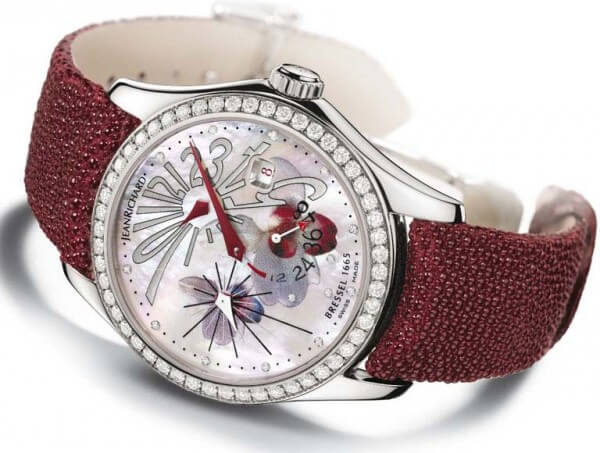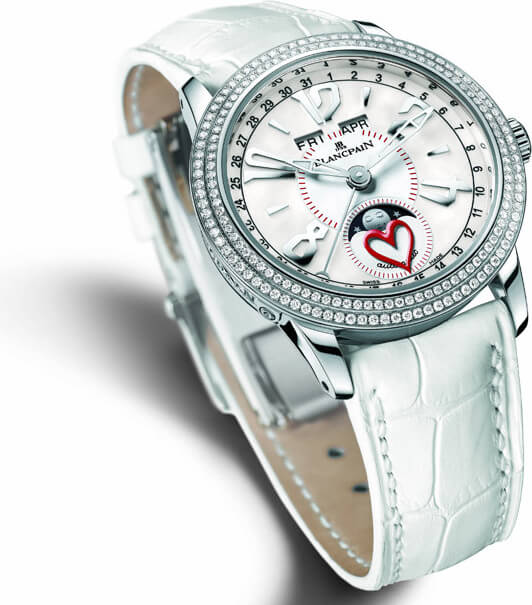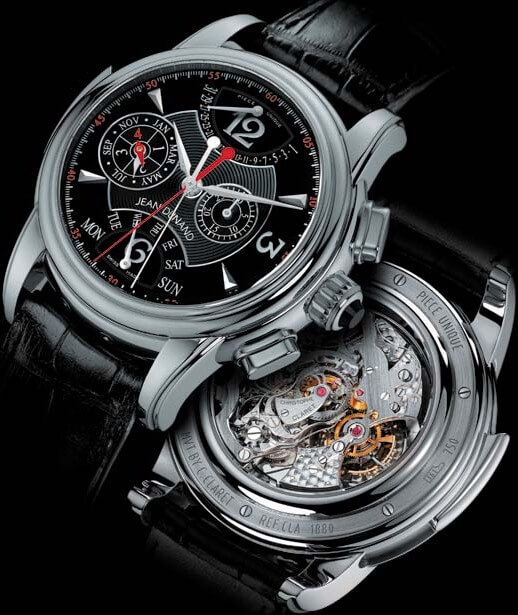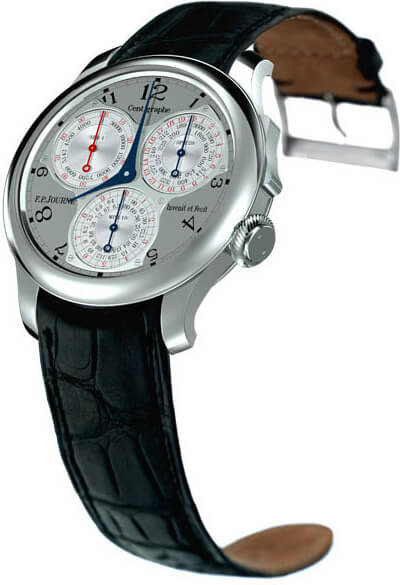Over recent years, how many of the new brands on the market have miraculously resuscitated these unforgettable figures of yesteryear? And for good reason. As the Swiss watch sector sails through its fourth year of runaway international growth (see “Economy”), investments have been pouring into a sector that many consider a veritable goldmine.
Except that not just anyone can enter this holy of holies. For a brand to make a breakthrough, it needs to stand out in a crowd of 300 or so competitors, be it with a major innovation, a groundbreaking design, an unprecedented concept or why not all three. Unless it can carve out a place in one of these niches with products in a class of their own, a brand has little or no chance of interesting retailers who are already heavily courted by the major groups and established names. In this context, to boast the name of one of watchmaking’s illustrious pioneers is a non-negligible asset, knowing that while the branch looks to the future, it also has an eye firmly on past achievements, and that movement-makers are prospering. Granted, not everyone has chosen this route… but for those who have taken a different tack, only a consummate mastery of the watchmaker’s art, transformed into exceptional timepieces, can save them. And this is something to which only a rare few can lay claim.

Mechanical masters
This tendency to resurrect iconic watchmakers is nothing new. It began with the revival of the mechanical watch and already has several feathers in its cap. For his first masterstroke, Jean-Claude Biver, CEO of Hublot, restored Blancpain to its former glory with the promise “Blancpain will never make a quartz watch.” Nor has this tactic escaped the major groups’ attention. Swatch recognised a good opportunity when it took over Breguet: after a decade stagnating at Investcorp, the brand is now enjoying a second lease on life. The group struck again at the turn of the century with its takeover of Léon Hatot and Jaquet Droz, two prestigious names that were languishing in oblivion.
Not to be left behind, in 2000 Richemont took control of A. Lange & Söhne, a prestigious watch firm which had disappeared in 1948, expropriated by the German communist regime, reappearing only in 1994. Next came Panerai, established in 1860 and acquired by the group in 1997 at a time when its name was familiar to only a few. Since then the brand’s success on international markets has escaped no-one. The Sowind group took a similar approach when in 1988 it took over the Daniel JeanRichard brand, restoring to life this pioneer of Swiss watchmaking whose name is now the Manufacture’s second pillar.
An inspiration for every segment
These examples show which audience these not-quite-newcomers are targeting: connoisseurs with an appreciation of beautiful watches, history and tradition, collectors at heart and, more often than not, wealthy. Indeed, the brands take care to nurture these sensitivities, retelling watchmaking sagas, often laced with feats of old-fashioned technology, for today’s clientele and always emphasising a tradition that brings a legitimacy their recent history could never hope to attain. With the watch segment still riding the crest of a wave, the major groups have inspired others, and not just at the high end of the market.
Take the example of Marvin, founded in 1850 in Saint-Imier and back in the driving-seat with an affordable range of prices. Similarly, in 2003 Alain Spinedi breathed new life into Louis Erard, a brand registered at the turn of the century and for which the 1990s were troubled times. He aims to carve out a comfortable position in reasonably-priced mechanical watches. Frédéric Constant took a similar approach when he relaunched Alpina, a trademark founded in 1903 by the Swiss Watchmakers Corporation in Winterthur, bought out by German investors in 1972 and transferred to Cologne though with little success. Established in 1858, Vulcain has a veritable Manufacture movement, the celebrated Cricket alarm, up its sleeve. Naturally, this is something the brand’s new proprietors since 2001 will be emphasising as they relaunch the brand.






















